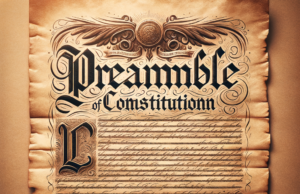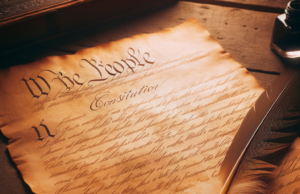Table of Contents
Apportionment is the process of dividing up a fixed quantity or resource among different individuals or groups in a fair and equitable way. This concept is commonly applied in many areas of life, such as taxes, representation in government, and allocation of resources.
One of the most notable cases of apportionment is in the allocation of seats in the United States House of Representatives. The Constitution mandates that each state be granted at least one representative, and the total number of representatives is proportionally apportioned based on the population of each state. This system ensures that each state is fairly represented in Congress, with larger states receiving more representatives than smaller states.
Another important application of apportionment is in the distribution of funds and resources. For example, in a company that offers bonuses based on performance, apportionment might be used to divide up the bonus pool based on each employee’s contribution to the company’s success. Similarly, in the distribution of government resources, apportionment might be used to allocate funding for schools, transportation infrastructure, healthcare, or any other area where resources are needed.
In order for apportionment to be effective, it must be based on clear and objective criteria. For example, in the case of congressional representation, population is used as the primary criterion for determining each state’s allocation of seats. This objective criterion ensures that each state is treated fairly, regardless of subjective factors such as political power or personal biases.
However, even with objective criteria, apportionment can be controversial and complex. For example, in the case of redistricting, the process of drawing electoral boundaries based on population shifts, there can be disagreements over the manner in which resources are divided. Some argue that redistricting can be skewed based on political motivations, and that the final result may not accurately represent the population.
Despite these challenges, apportionment remains an important tool for ensuring fairness and equity in the distribution of resources. By using objective criteria and ensuring transparency in the process, apportionment can help avoid conflicts and ensure that everyone receives their fair share.
The House of Representatives of the United States serves as one of the two chambers of the United States Congress. The House of Representatives is often referred to simply as the House. It is composed of 435 members who represent the constituent districts of the United States. The number of representatives for each state is determined by apportionment, which is the process of allocating the seats in the House of Representatives based on the population of each state.
The apportionment process has had a significant impact on US politics as well as the legal system. This article explores the significance of apportionment and its impact on the United States.
Background
The Constitution of the United States established the House of Representatives in Article I, Section 2. It specified that the House would be composed of members elected by the people of the several states. It further provided that the number of representatives would be determined by the population of each state. However, the Constitution did not provide a specific formula for determining the number of representatives for each state.
The first apportionment of congressional seats occurred in 1792, after the first census was completed. The number of representatives was set at 105, with each state being assigned a number of seats based on its population. This apportionment was based on a formula proposed by Alexander Hamilton, which became known as the Hamilton method. The formula was based on dividing the population of each state by the number of seats it would be allocated if the House had 100 members, and then allocating the remaining seats to the states with the largest fractions.
The Hamilton method was used for over a century, but it was not without controversy. Some argued that it was not fair to smaller states, as it tended to assign a greater number of seats to the larger ones. In 1850, Congress passed a law specifying that apportionment would be based on the method of equal proportions. This method was proposed by Daniel Webster, and it is still in use today.
The Method of Equal Proportions
The method of equal proportions is a mathematical formula that calculates the number of seats each state is allocated based on its relative population size. The formula is based on the idea that each state should have at least one representative, and that the remaining seats should be allocated in such a way as to minimize the deviation of the population of each district from the average population of the districts.
The method of equal proportions was first used in 1940, and it has been used in every decennial census since then. The formula is used to calculate the apportionment of seats in the House of Representatives, as well as the allocation of delegates to the Electoral College.
Impact on US Politics
Apportionment has had a significant impact on US politics. As the population of the United States has grown and shifted over time, the number of representatives assigned to each state has changed accordingly. This has resulted in changes in the political balance of power in the House of Representatives.
For example, the growth of the population in the southern and western states in the mid-20th century resulted in a shift in political power away from the Northeast and Midwest. This shift was reflected in the apportionment of seats in the House of Representatives. As a result, many southern Democrats who had previously supported segregation and racism switched to the Republican Party, and the Republican Party became more conservative.
In recent years, apportionment has become a political issue in itself. Critics of the current method of equal proportions argue that it is unfair to smaller states, as it tends to allocate more seats to the larger ones. They argue that this results in an unequal distribution of political power and influence. Some have proposed alternative methods of apportionment, such as the Wyoming Rule, which would allocate one representative to each state and then allocate the remaining seats based on the size of each state’s population relative to Wyoming’s.
Legal Issues
The apportionment process has also been the subject of legal challenges over the years. One of the most important cases involving apportionment is Baker v. Carr (1962). In that case, the Supreme Court held that apportionment was a justiciable issue, meaning that it was subject to judicial review. The Court ruled that political gerrymandering, or the process of drawing district boundaries to favor a particular political party, was unconstitutional.
The Court also held that the principle of “one person, one vote” must be followed in apportionment. This means that each district must have roughly the same population, so that each person’s vote has roughly the same weight. This principle has had a significant impact on the apportionment process, as it has required states to redraw their district boundaries to comply with the principle.
In recent years, the Supreme Court has continued to address issues related to apportionment. In Rucho v. Common Cause (2019), the Court ruled that political gerrymandering is not a justiciable issue, meaning that it is not subject to judicial review. This has led to renewed debate over the role of the courts in the apportionment process.
Conclusion
Apportionment is a critical component of the United States political system. It determines the allocation of seats in the House of Representatives, which in turn shapes the political balance of power in Congress. The apportionment process has evolved over the years, reflecting changes in the population and the political landscape. It has also been the subject of legal challenges, with the Supreme Court playing an important role in defining and shaping the process. As the United States continues to change and evolve, the apportionment process will undoubtedly remain an important issue in US politics and the legal system.
10 Important Facts about Apportionment:
1. The Hamilton method was used to determine apportionment for congressional seats until 1850.
2. The method of equal proportions has been used since 1940.
3. The apportionment of seats in the House of Representatives can influence the balance of political power in Congress.
4. Apportionment has become a political issue, with debates over the fairness of the current method.
5. The Supreme Court ruled in Baker v. Carr (1962) that apportionment is a justiciable issue subject to judicial review.
6. The Court also established the principle of “one person, one vote” in apportionment.
7. Political gerrymandering is the process of drawing district boundaries to favor a particular political party.
8. In Rucho v. Common Cause (2019), the Supreme Court ruled that political gerrymandering is not a justiciable issue.
9. The Wyoming Rule is an alternative method of apportionment that has been proposed.
10. Apportionment will undoubtedly remain an important issue in US politics and the legal system as the United States continues to change and evolve.

























